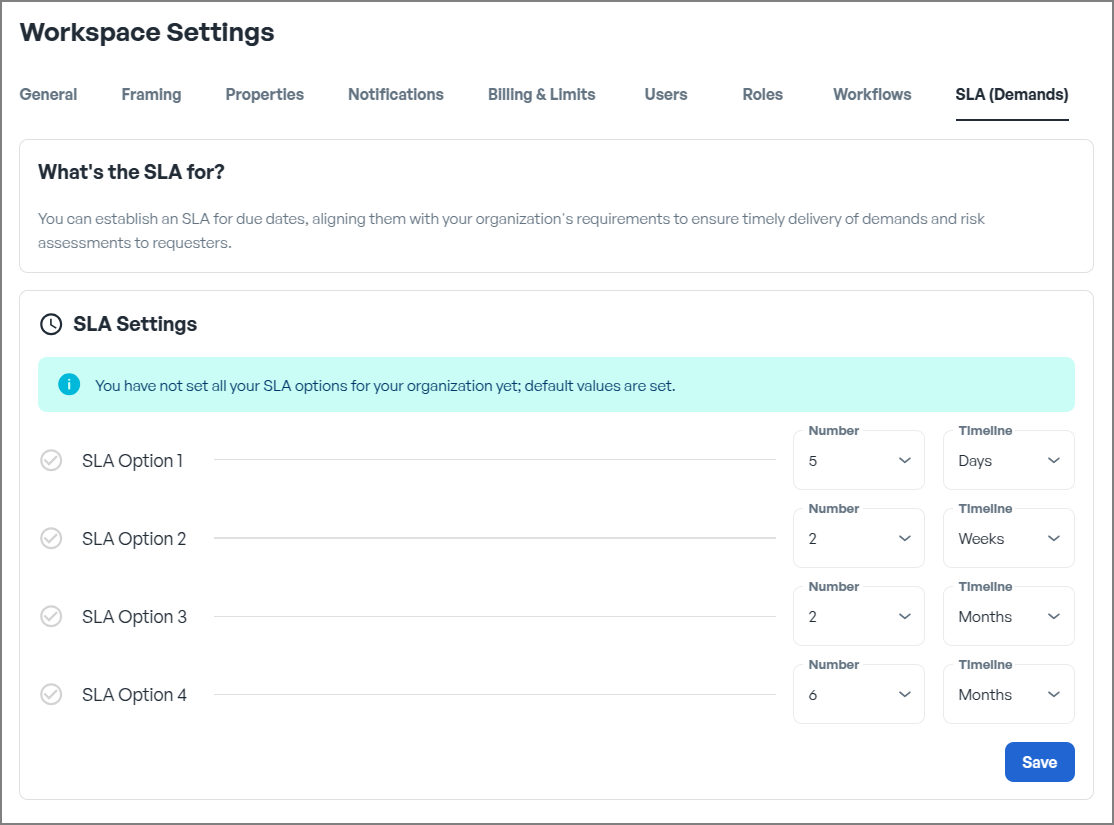9. SLA (Demands) Settings
Service Level Agreements (SLAs) play a crucial role in the risk assessment demand creation process, ensuring that requests are managed within defined timeframes. SLAs help organisations maintain efficiency, accountability, and transparency in task execution and follow-ups.
Customisable SLA Levels
SLAs can be defined at four different levels, each offering customisable durations based on your organisational requirements. Timeframes can be set in days, weeks, or months, depending on the complexity and priority of the demand.

- Level 1: For high-priority tasks requiring immediate attention.
- Level 2: For medium-priority tasks with moderate deadlines.
- Level 3: For low-priority tasks with extended timelines.
- Level 4: Custom configurations for specialised tasks or unique workflows.
Flexibility Options:
- SLAs are optional.
- You can opt to define fixed due dates instead of SLA-based tracking.
- Alternatively, you can disable SLAs entirely if they are not aligned with your process requirements.
Why Use SLAs?
SLAs provide clear task timelines and support effective risk assessment management by:
- Ensuring Accountability: Track ownership and responsibility for tasks.
- Improving Efficiency: Minimise delays with structured workflows.
- Enhancing Traceability: Maintain audit trails for compliance.
- Facilitating Communication: Keep stakeholders informed with clear expectations.
When managed effectively, SLAs ensure timely execution, stakeholder confidence, and operational excellence.
Key Takeaways
- SLAs offer structured task timelines and improve accountability.
- Flexibility allows for custom durations or fixed due dates based on needs.
- Effective SLA management enhances efficiency, traceability, and communication.
By leveraging SLAs, your organisation can ensure a reliable and transparent risk management process aligned with your operational priorities.